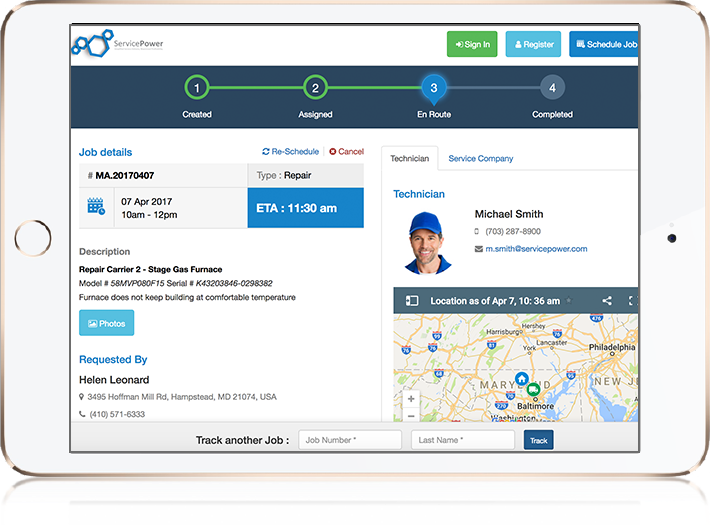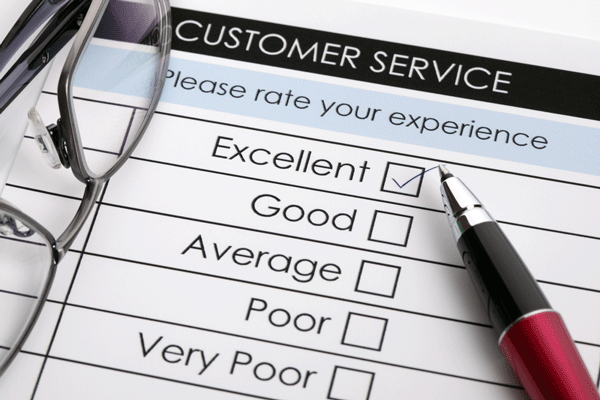Understanding the benefits of mixed workforce management
Field service businesses everywhere are integrating third-party contractors into their operations, intent on both bolstering their offerings and...
3 min read
 ServicePower
:
November 02, 2017
ServicePower
:
November 02, 2017

Ever since Alexander Gram Bell invented the telephone, the process for requesting field service has been: 1) customer has problem; 2) customer calls for service; 3) customer waits for call back or is offered an appointment; 4) tech is dispatched; 5) tech or service operations calls to provide an ETA; and lastly 6) customer waits for service. New, integrated consumer engagement portals revolutionize the service request process, making the old process as antiquated as the rotary phone. We’ll probably always refer to consumer requests as ‘service requests’, but with customer portals, service clicks
Service providers with websites that provide digital portals to meet the needs of their customers offer the ability to request service without the need for a phone call.
There are several advantages to this digital process. Instead of describing a problem to a person whom might not relay the issue correctly, customers can either choose from a predetermined list or type in a problem description themselves, making it easier for field techs to triage requests, providing more accurate ETAs and ensuring parts required are stocked on the truck.
Customers can also entitle their service requests, inquire about specific times for service, check appointment status, and communicate directly with the technician assigned to their service call.
The best portals even provide an interactive map that shows tech location at any given moment. Intelligent customer engagement portals also enable customers to drive their own experience, providing the ability to upload photos, videos, or other information, perhaps an
Integrated, smart portals provide field service organizations with more information prior to arrival, decreasing the time to service and the number of truck rolls required to solve issues, making customers happier, faster.
Experienced field service technicians understand the value of communication between customers and the service force. Technicians take ETAs seriously, especially when those ETAs are created using AI-based schedule optimization solutions and communicated to customers at booking. However, sometimes, the best-planned routes and service calls can turn sideways. What is sometimes supposed to be a simple problem with a quick fix sometimes turns into a longer, more challenging service
When technicians are neck deep in a difficult repair or maintenance situation, their minds are so concentrated on the resolution that time seems to stand still. Nothing but fixing the machine
Intelligent consumer portals take the burden of communication off of the technicians' shoulders, automating communications via methods the customer selects in the portal when setting up service calls, and also by providing a variety of mapping information which benefits the customer, as well as the technician and field operations.
Intelligent consumer portals empower field service customers by allowing them to be a part of the process rather than feeling like they’re just the next service call in the queue. Intelligent customer portals provide a seamless, self-service mechanism to provide job status, and information regarding whether an ETA will be impacted, keeping the customer apprised of unforeseen changes in arrival times. Consumer portals enable technicians to be more effective and more transparent, automatically relaying information which helps improve first time fix rates, as well as information related to location and arrival. Consumer portals are also great revenue generators for field service operations. Using asset and service history, combined with AI-based predictive intelligence, portals can provide new services and products that are relevant to each customer, personalizing the offers and capturing new revenue streams automatically.
Customer expectations of how and when they interact with service organizations have changed in lockstep with emerging technologies. Integrated, intelligent consumer engagement solutions, especially those within an end-to-end field service management suite, keep pace with technologies and your customer's new service reality.
Check out ServicePower's new Customer Engagement Solution today!

Field service businesses everywhere are integrating third-party contractors into their operations, intent on both bolstering their offerings and...

The Internet of Things (IoT) continues to be a high impact emerging technology in field service operations. According to Field Service News, talk of...

Many companies now use customer surveys to accumulate data and learn more about what people want. If you're using this tool in your own business, do...